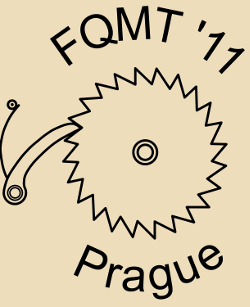Wallenstein Palace
Wallenstein Palace is situated just below the Prague Castle, in the very center of the Lesser Town (Malá Strana) in close vicinity the Lesser Town Square and the Charles Bridge - see map Pyramida Hotel neighborhood. The origin of the settlement in the Lesser Town is directly linked to Prague castle, which was founded around 880 AD. The oldest settlement of the future city named Prague was concentrated just to places below the castle. In this area the second town of Prague was later formed: the space between the river of Vltava and Prague Castle was fortified in the 13th century and the Lesser Town was founded in 1257 by the Czech King Přemysl Otakar II.
The Wallenstein Palace was built from 1624 to 1630 as a seat of the Imperial generalissimo, Admiral of the Atlantic Ocean and the Baltic Sea, Albrecht Eusebius of Valdstein (Wallenstein) who was one of the most important figures of the Thirty Year's War. Apart from being famous as a very influential soldier (Commander-in-Chief of the Imperial Army), Wallenstein is also known for his belief in the influence of the stars. It is a very interesting experience to read personal characterization of Wallenstein in the horoscope written for him personally by Johannes Kepler. This link is not the only one which connects Wallenstein Palace with astronomy and physics: inside the Palace there is the astronomical-astrological corridor with allegories of seven planets, the leading architect who designed the Wallenstein Palace and its Sala Terrena in the huge Baroque garden was Italian Giovanni Battisto Pieronni, a student of Galileo Galilei. When designing the huge palace complex of the Wallenstein Palace, Pieronni (together with two other Italian architects A. Spezza and N. Sebregondi) combined elements of the Late Renaissance with those of the Early Baroque. He also hired the most renowned artists to participate on the art works and decoration of the palace. This resulted in the first Baroque palace complex in Prague which became a really representative and up to date as for fashion seat of Albrecht Wallenstein. By this palace the idea of Wallenstein to express his power and glory by building a magnificent palace whose size and decoration even surpassed those of the Prague Castle, was fulfilled.
To imagine the size of the Wallenstein Palace we can remind the fact that Wallenstein purchased twenty three houses, three gardens and the municipal brick-kiln to gain the place for his palace. The palace complex has a perimeter of almost 750 meters. It is completely separated from the outside world by walls and concentrated around a landscaped garden and five courtyards. The huge garden is famous for its monumental Baroque Sala Terrena with three open arches as well as for a number of bronze statues of ancient gods by Adriano de Vries. As for the Palace rooms, the most famous place there is the Main Hall. This hall reaches to the height of two floors and its dimensions are further enlarged optically by mirror windows.
The Wallenstein Palace is nowadays the seat of the Senate of the Parliament of the Czech Republic. You can also look at the multimedia presentation of the Wallenstein Palace .
